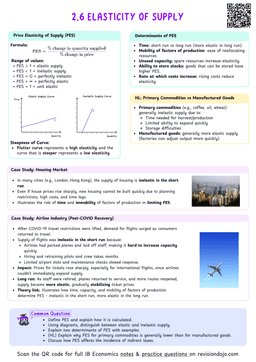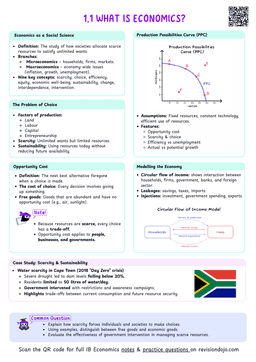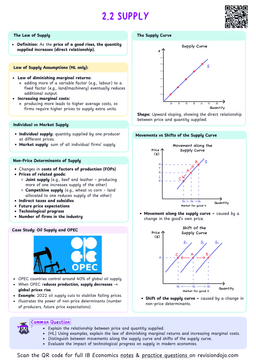Aggregate demand
The total quantity of real output that all buyers in an economy (consumers, businesses, the government, and foreigners) are willing to purchase over a specific time period, at all possible price levels, ceteris paribus.
- Aggregate Demand (AD) is not just the demand of real output from consumers.
- AD consists of the total demand for goods and services in an economy across all the expenditure components:
- Consumer spending (C): all spending made by households on final goods and services during a particular time period.
- Investment (I): investments made:
- By firms on physical capital: money spent on assets used to produce goods and services (factories, machinery, offices...).
- By households and firms on new construction: new housing and other new construction assets.
- Government spending (G): spending made by governments on the economy (roads, hospitals, purchasing of factors of production...).
- Net exports (X-M): the market value of the exports (X) of an economy minus the market value of imports (M) into an economy.
- Exports refer to goods and services produced domestically, and so are included in the calculation of the national output (GDP).
- Imports represent domestic spending on goods and services produced in external economies, and so must be subtracted from expenditures to accurately measure domestic output.
Therefore, the formula for Aggregate Demand (AD):
$$AD=C+I+G+(X-M)$$
TipAggregate Demand (AD) can be understood as the real GDP (real output) that consumers, firms, governments, and foreigners want to buy at each possible price level (over a period of time, ceteris paribus).
It is for this reason that AD uses the same formula as real GDP; it adds up the amount of real output that each GDP component is willing to buy at each price level.
NoteThe price level is nothing more than the average of all prices of goods and services in an economy. It shows how expensive or cheap things are overall.
Aggregate demand (AD) curve
The AD curve (Figure 1) visually represents the relationship between the price level (vertical axis) and real GDP (horizontal axis).
As can be seen by Figure 1 above, the AD curve is downward-sloping. Therefore:
- As the Price Level (PL) of an economy increases, the aggregate demand for real output of all buyers (consumers, firms, government, and foreigners) decreases.
- As the Price Level (PL) of an economy decreases, the aggregate demand increases.
The negative relationship between the Price Level (PL) and Aggregate Demand (AD), is due to two effects:
- The wealth effect:
- At lower price levels, the purchasing power of money increases, making consumers feel wealthier.
- This increases the amount of real GDP consumers are willing to consume.
- The interest rate effect:
- Lower price levels lead to lower interest rates.
- With lower interest rates, firms can borrow money for cheaper; increasing the real GDP firms are willing to buy as investments.
- With lower interest rates, consumers are less encouraged to save (since they gain less interest in saving accounts), which the amount of real GDP consumer are willing to buy.
These two reasons behind the AD curve being downward-slopping are beyond the scope of the IB Economics syllabus.


